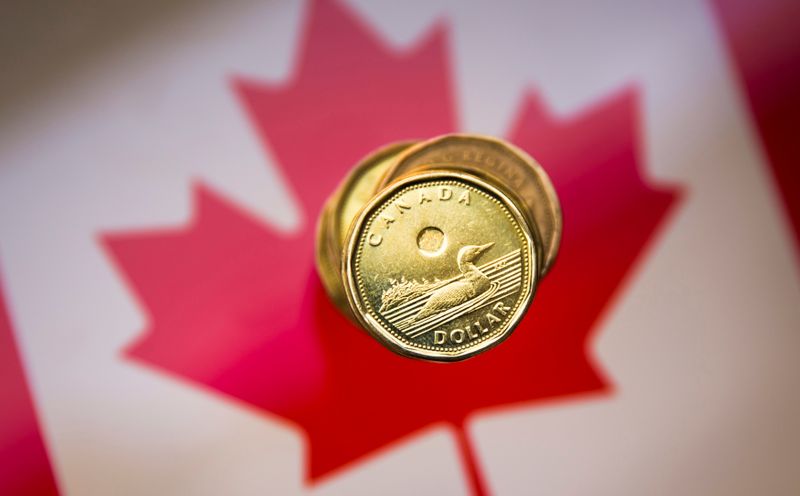
FILE PHOTO: A Canadian dollar coin, commonly known as the “Loonie”, is pictured in this illustration picture taken in Toronto, January 23, 2015. REUTERS/Mark Blinch
January 9, 2020
By Fergal Smith
TORONTO (Reuters) – The Canadian dollar, last year’s top-performing G10 currency, will shift into a sideways trading pattern this year as the domestic economy softens and the recent boost from easing trade tensions fades, a Reuters poll showed.
The currency rallied 5% against the U.S. dollar in 2019, with about half that gain accumulated in the final few weeks of the year as signs emerged of recovery in the global economy and as the United States and China moved toward an interim trade deal.
Canada is a major exporter of oil and other commodities so its economy is more dependent on trade than some other countries, including the United States.
“Risks decreased significantly at the end of 2019, which helped the loonie and several other currencies. We do not expect another significant reduction in risks in 2020,” said Hendrix Vachon, a senior economist at Desjardins. “We prefer to bet on a fairly flat trajectory for the currency for the short term.”
The poll of over 40 currency analysts showed they expect the loonie to weaken 0.5% to 1.31 per U.S. dollar, or 76.34 U.S. cents, in three months, from 1.30 earlier on Thursday. It is then expected to strengthen to 1.30 in one year, matching the forecast in December’s poll.
The projected loss of upside momentum for the loonie comes after recent data pointed to a slowdown in the domestic economy that could keep the door open to a Bank of Canada interest rate cut. Last year, the central bank left its benchmark rate on hold at 1.75% amid easing by some of its major peers, including the Federal Reserve and the European Central Bank.
Data in recent weeks has showed Canada’s economy shrank 0.1% in October and shed more than 70,000 jobs in November. The December employment report is due on Friday.
Some economists are projecting annualized growth of less than 1% for the fourth quarter. In October, the Bank of Canada projected fourth quarter growth of 1.3%.
“We believe that restrained exports and business investment will feed into the weaker growth dynamic and set the stage for a BoC rate cut in Q2 (the second quarter), most likely in April,” said George Davis, chief technical strategist at RBC Capital Markets.
A Reuters poll in November showed four of the top five major Canadian banks expected the BoC to cut rates at least once by end-2020. Money markets see about a 50% chance of an ease over the same period.<BOCWATCH>
(Polling and analysis by Indradip Ghosh, Sumanto Mondal and Tushar Goenka in BENGALURU; Editing by Ross Finley and Chizu Nomiyama)

